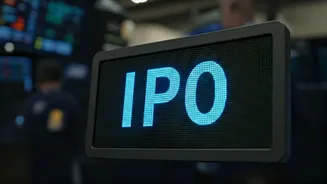Understanding OFS Basics
Offer for Sale (OFS) is a process used in Initial Public Offerings (IPOs) where existing shareholders, such as promoters or early investors, sell their
shares to the public. Unlike a Fresh Issue, where the company raises capital directly, in an OFS, the money goes to the selling shareholders, not the company. This distinction is crucial because it influences how the company’s financial position and future prospects are affected by the IPO. Retail investors should know that when investing in an OFS, they are not necessarily investing in the company's growth directly, but are buying shares from existing stakeholders. This mechanism allows existing investors to exit their investment or reduce their stake without the company needing to issue new shares.
Fresh Issue vs. OFS
The difference between a Fresh Issue and an OFS is fundamental to understanding the implications of an IPO. In a Fresh Issue, the company issues new shares to raise capital. This influx of capital can be used for various purposes, such as expanding operations, investing in new projects, or reducing debt. This method of capital raising directly benefits the company. Conversely, an OFS does not provide any fresh capital to the company. The shares sold in an OFS come from existing shareholders, and the proceeds go to them, not the company. While an OFS can provide liquidity for existing investors, it does not necessarily indicate a growth trajectory for the company. Retail investors should consider whether the IPO is a Fresh Issue, an OFS, or a combination of both when evaluating the opportunity.
After the Listing
What happens after a company gets listed on the stock exchange is a crucial aspect for investors to understand. After the IPO, the company's stock starts trading on the open market, and its price is determined by the forces of supply and demand. The initial price movement can be volatile, influenced by investor sentiment, market conditions, and the company's performance. The company’s long-term performance will greatly influence its share price. Investors should therefore monitor the company’s financial results, business developments, and industry trends to make informed decisions. Also, it’s necessary to keep track of the announcements and filings made by the company to stay updated on its progress.
Timing is Key
Timing is an essential element in the IPO landscape, and investors must watch it closely. Market conditions, including overall market sentiment, interest rates, and economic outlook, significantly impact IPO performance. Generally, IPOs tend to be more successful during periods of strong market performance and investor optimism. Furthermore, the timing of an IPO relative to other market events and news can affect its outcome. Investors should consider the timing of the IPO relative to the company's financial results and recent business developments. This awareness can provide valuable insights into its prospective success. Retail investors should research market trends before making any investment decisions to make sure the time is right.
Not All OFS Bad
It is crucial for retail investors to understand that not all OFS-led IPOs are inherently bad investments. While OFS does not directly benefit the company, it can provide liquidity for existing shareholders, allowing them to exit their investment. Also, the IPO can provide an opportunity for new investors to participate in a company's growth. Investors should look beyond the OFS structure and assess the fundamentals of the company. These fundamentals include its financial health, growth prospects, management team, and industry position. Also, the valuation of the company's IPO price is a vital factor. Investors should compare it to its peers to determine if it is priced fairly. A thorough evaluation of these factors will help investors determine whether an OFS-led IPO is a wise investment.











